Osteochondrosis – degenerative of the defeat of the articular cartilage and submitted in the bone tissue. The disease affects all the joints and musculoskeletal. In the internal medicine osteochondrosis called on the services of the degenerative process of the intervertebral discs, the small joints of the spine and vertebrae.
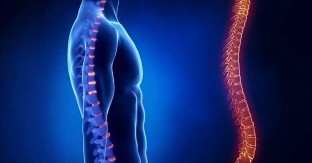
What is low back pain?
Osteochondrosis of the spine reaches the cervix, breast and back. The type of the disease is determined by the localization modified tissue. According to the pathology is the violation of the trophic of the intervertebral discs and vertebrae. It leads to a change in the normal structure of the cartilage. Because of the cartilage degeneration, the disc loses its elasticity, changes the texture and the shape. Narrowing of the spreads between the vertebrae, and hit a segment of the spine loses stability.
The reduction of the distance between the vertebrae is accompanied by tension in the muscles of the back, compression of the nerve roots that leave the spinal cord. This explains the appearance of the pain and neurological symptoms osteochondrosis.
The dystrophy of the disk leads to a weakening of the outside of the fibrotic ring. Therefore, in patients with low back pain often occur protrusion (bulging disc) and spinal hernia (overhang nucleus pulposus of the disc into the spinal canal). In the future, the pathology extends over the small joints of the spine, ligaments, intervertebral:
- occur bony growths of the vertebrae;
- the patient difficult to bend, straighten;
- loses flexibility of the spine;
- appear the vertebral subluxation complex;
- the warranty of the affected area of the spine (kyphosis, scoliosis).
Degenerative changes in the cartilage and the bone tissue are the normal result of aging. For several reasons, the development of the pathology can accelerate. 70% of patients with osteochondrosis — people over 45 years of age. The early onset of the pathology is due to the physical education of children, the overweight in adolescents.
The youth of today spent much time on the computer and the television, avoiding games outdoor, street, walks and sports activities not knowing what is osteochondrosis and how dangerous it is. A long stay in a sitting position promotes:
- the violation of posture.
- the weakening of the muscles of the back;
- the development of problems of the spinal column.
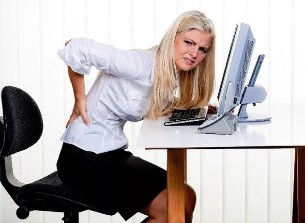
The Causes of disc degeneration
The causes of the disease are divided into 3 groups. The first is related to the increase of the load on the spine:
- excess weight;
- the physical work (in particular, lifts of cargo);
- professions requiring prolonged standing, or from a seat;
- the wearing of uncomfortable shoes, high heels, handbags and on the shoulder;
- a bad posture;
- not quite developed a framework due to the sedentary lifestyle;
- congenital and acquired deformation of the spine;
- flat feet.
The second group includes the internal causes:
- heredity;
- the age of the modification;
- the violation rate;
- the intoxication of the organism;
- the nervous tension, the stress;
- serious somatic diseases;
- hormonal changes (for example, during pregnancy, menopause);
- the autoimmune disease of the connective tissue.
The third group consists of external causes:
- injuries of the spinal column;
- the lack of vitamins and minerals (including vitamins A, c, group, calcium and phosphorus);
- bad habits;
- interrupted sleep, a mattress and a pillow.
Professional sport is the cause of premature ageing of the intervertebral disc every 20th of the athlete. The process of degeneration is accelerated after the abrupt cessation of training.
The symptoms of the degenerative disease disk
Osteochondrosis is a chronic disease that occurs with an alternation of periods of exacerbation and remission. The development of the symptomatology of acute contribute to:
- an excessive physical activity;
- fatigue;
- hypothermia;
- injuries;
- tremor of the body and the effects of vibration.
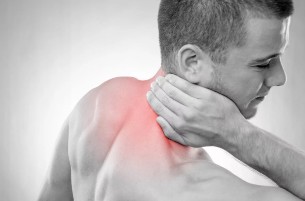
The clinical picture of acute exacerbations depends on the location affected by the cartilages, the presence of complications.
- For the cervical osteoarthritis characterized by pain in the neck, the hands, stiffness of movements, numbness of fingers, headache. If compressed the vertebral artery, the person's condition worsens: you receive a throbbing headache, dizziness, loss of hearing, there are "flies in front of the eyes", there may be fainting.
- The signs of degenerative disc disease, and thoracic: worried about acute or stabbing pain in the back, the feeling of "stake in the chest", pain in the heart and the internal organs, difficulty breathing (hard to breathe with full chest because of the muscle stiffness and pain).
- When lumbar osteochondrosis is a pain in the lower back, the rump and the legs, worse during walking. Come back pain in the lower back during exercise, numbness of lower limbs. Appear the dysfunction of the genito-urinary organs (pain, breach of the urinary tract, functions of impotence problems in men, dysfunction of the ovary in women). In the period of remission the patient felt a slight pain that only occurs under the influence of triggering factors (expense, forced to the ease of installation and other).
Osteochondrosis and IRR
The pathology of the joints often lead to interference of the nerve roots, blood vessels that supply the brain in the irritation of the nodes responsible for the functioning of the internal organs. These factors are the cause of disorders of the cardiovascular and the nervous system. 8 of the 10 patients osteochondrosis develops the syndrome of dystonia (IRR), including the symptoms:
- the sudden changes of the blood pressure;
- headaches;
- nausea and vomiting;
- sleep disorders;
- dyspnea;
- chills or hot flushes;
- common fatigue.
In severe cases loss of consciousness.
In 95% of cases of a concrete link between the health status of the patient and the weather conditions.
The described symptoms accompanied not only to low back pain. Patients with a clinical picture need investigation to exclude somatic and endocrine pathologies.
The diagnosis of the disease, degenerative disk
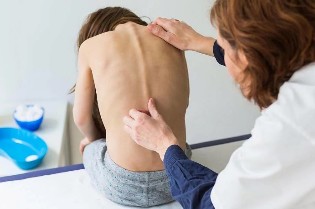
The patient must know what is the doctor treats the pain in the lower back, to get an appointment with the right person. The problems of the spinal column is involved in a neurologist, which should be consulted for pains in the back, the neck, the lower back. Investigation of patients with suspected degenerative disc disease takes place in several stages and may last from 1 to 7 days:
- an investigation;
- the external examination of the spine in different body positions (lying, sitting, standing);
- palpation of the vertebral column, located on and around the soft tissue;
- the definition of the amplitude of the movements in the different departments of the vertebral column;
- instrumental study: computed tomography, resonance imaging, nuclear, x-ray.
When the difficult to diagnose spend a specific study of the blood vessels and nerves are peripheral.
How and with what to treat lbp?
The treatment of degenerative disc disease of the spine is long and requires a holistic approach. In the therapy, applied drugs and the physical therapy is selected, an individual approach to each patient. Choice of the regimen depends on:
- the severity of the pathology;
- the state of the patient;
- the presence of complications of the disease.
An important condition for an effective treatment of degenerative disc disease – the gradual elimination. The primary goal of treatment of the exacerbation of the disease for the treatment of pain. The patient is recommended of the peace, wearing special corsets and collars for the unloading of the spine. Applies to internal and external medications, place physio. The next step perform the activities that warn the news of the aggravation:
- physiotherapy (dosed muscle strengthening exercise, a corset, and the development of posture);
- therapeutic massage;
- manual therapy;
- reflexology, etc
The drug treatment
Drug therapy, low back pain seeks to eliminate pain, cartilage regeneration, improvement of microcirculation and trophic in the segments of the spine. The Patient is prescribed:
- analgesics nonsteroidal anti-inflammatory drugs (tablets, injections, ointments, etc);
- the muscle relaxants to relieve muscle tension, which appears low back pain and causes of pain;
- local analgesic treatment with compresses of novocaïne, the blockade, the patches heated and others;
- chondroprotectors, which contribute to the regeneration of the cartilage;
- the vitamins and minerals in the form of tablets or a solution for injection;
- vasodilators drugs to resolve the reflex spasm of the vessels;
- the drugs for the normalization of metabolism in the tissues.

Physiotherapy
Physical therapy or PHYSIOTHERAPY, osteochondrosis promotes the formation of a strong muscular corset, which ensures a uniform distribution of the load on the spine. With a course:
- the blood circulation improves and the nutrition of the tissues, the intervertebral disc;
- produced by the correct posture;
- increases the volume of movements of the spine.
The breathing exercises relieve muscle spasms and pain, and the swimming relieves and relaxes the spine.
Gymnastics, medical training and rehabilitation of the simulators are made after reduction of the symptomatology of the acute disease.
The basic rules of physical exercises:
- the regularity of the (exercises to do every day);
- the progressiveness (the courses last for 10 to 15 minutes, each week it is necessary to increase their duration of 5 minutes, in a period of 2 months);
- moderation (after the class, the patient will feel a slight fatigue, the exhaustion after the gymnastics – the sign of a bad approach of the CFL).
The exercises should not be uncomfortable. At the onset of pain in the back of the course, you must stop and discuss with the doctor the opportunity to continue their studies.
Technical auxiliary treatment of degenerative disc disease
Comprehensive conservative treatment of degenerative disc disease in addition to drug therapy and PHYSIOTHERAPY, includes:
- massage: helps to relieve the spasms of the muscles, eliminate pain and improve the blood circulation in the tissues;
- the chiropractic treatment;
- physiotherapy: hydro-massage, laser therapy, magnet therapy, effects of sonication;
- the stretching of the spine on a special equipment;
- reflexology and acupuncture: the impact on reflexogenic zones and points relaxes and relieves the pain in the back.
The prevention of degenerative disc disease
Osteochondrosis you need to reduce the load on the spine:
- a comfortable fit, the quality of the shoes;
- avoid prolonged exposure in an awkward position or in a standing position;
- control the body weight;
- observe a good posture;
- do not lift heavy weights, and, if necessary, evenly turn both hands to the weight distribution.
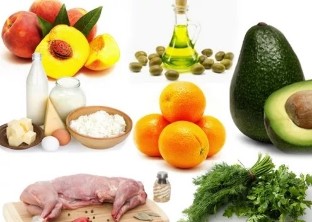
Is worth taking care of the physical fitness and strengthen the muscles of the back, that will be the daily strengthening of charging, the training in the swimming pool, the yoga.
An important part of the prevention of the degenerative disc disease is the diet. You need to include in the diet:
- dairy products;
- the fish;
- broths;
- jelly;
- jelly;
- leafy vegetables;
- the green;
- the olive oil and the butter;
- eggs.
Carbonated drinks, alcohol, coffee, fatty meats and salty foods should be abandoned.
In general, to diagnose low back pain is not so simple: it does not have to be independent of symptoms, often röntgen discovers the problems of the spine in people who have never experienced along the pain in the back. The first bells for the pretext to consult a doctor, can be headaches, pressure peaks, heaviness in the muscles, the vertigo during the rotation of the head. Often, the violations of posture is reflected to the outside of the form: slouching back and pronounced hump, heavily curves the kidney and the stomach tight.

































